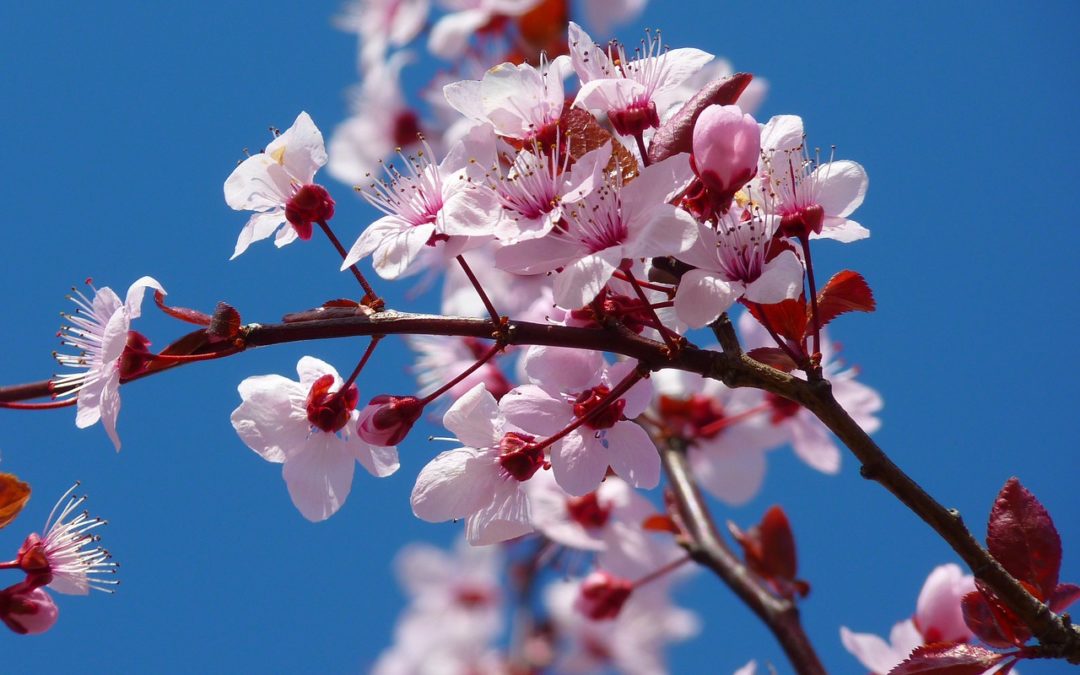Why did the blossoms leave?
We haven’t been in our new home long, still less than 12 months. We love it. It’s been a joy to live with our house through a full cycle of the seasons; the golden fall, the snowy nor’easters, the buds of spring, and now the overwhelming green of summer bearing down.
The blossoming of a tree in our front yard took our breath away. The color seemed to appear overnight. I took a picture on my phone looking up into laden branches in morning light. Nature is the perfect designer; blossoms just the right shade and size beautifully shaped to the tree and its branches with figure-hugging panache. But the beauty was gone too soon, too abruptly, a victim of spring wind and rain. How could nature create something so beautiful and then take it away so violently?
The blossoms came and went within two days in May—Mental Health month.
Then on June 5 we heard of the loss of Kate Spade to suicide. Friends and family—and fans—will be asking the same question; why did the beautiful blossom leave? On the outside looking in, people saw color, style, vibrancy, creativity, passion, success. All the blossoms of life. Yet clearly there was more to the story.
The suicide of a well-known figure makes visible for a fleeting moment the reality that so many people face every single day. Briefly, social media posts are full of encouragement to “please get help if you need it.”
Tens of thousands of people take their own lives every week, and the numbers are almost certainly underreported. We know the facts; they are all too well rehearsed.
- Youth depression is on the increase.
- Mental illness associated with substance abuse, regardless of which comes first, is not going away.
- Mental illness still carries significant stigma that discourages seeking help.
- Too many people with mental illness don’t have access to the treatment they need.
- Too often those who seek care have to wait for periods that would be unacceptable for any other health condition.
- Mental health is treated differently than other areas of health, as if it’s less urgent to treat.
- People with mental illness die younger than the rest of the population.
When a celebrity’s death brings attention to mental health, we have a moment of illumination on the topic. Too many leaders use mental health in their political talking points. Or they blog. (Yes I know I’m guilty too.)
The real question is, how do we sustain the conversation after the shock of the loss of someone like Kate Spade passes from the headlines? Because all the other lives that don’t make the headlines also matter. And all the lives that exist in the shadows, like blossoms barely clinging to the branch, matter.
Whatever the political climate, things must change and it’s urgent.
Our developing health system is putting mental health services center stage. One of our three core values is that Community Matters.
We are committing to create an environment that is safe and supportive, free of judgment or prejudice. We are committed to ending the societal stigma around behavioral health, and advocating to make emotional well-being integral to our definition of overall health. Our vision is clear and simple;
There can be no health without mental health; it is integral to the well-being of the whole community.
Not all of us can affect what happens in the US Congress, what is in the national budget for mental health services, or the opinions of particular elected officials. But we can still all care. We can see the people in front of us and know that there is always a deeper story. We can be willing to hear it. We can be willing to be part of it. We can be willing to say not just “Please get help” but “I’d like to help you.” When we act in those ways toward one another, we help end the stigma and live into our belief that there is no health without mental health.


